Banana loaf glaze is a timeless classic that brings warmth and comfort to any occasion. Its moist texture and rich banana flavor make it a beloved choice for breakfast, dessert, or an afternoon treat. But what truly makes this treat exceptional is the addition of a perfect glaze.
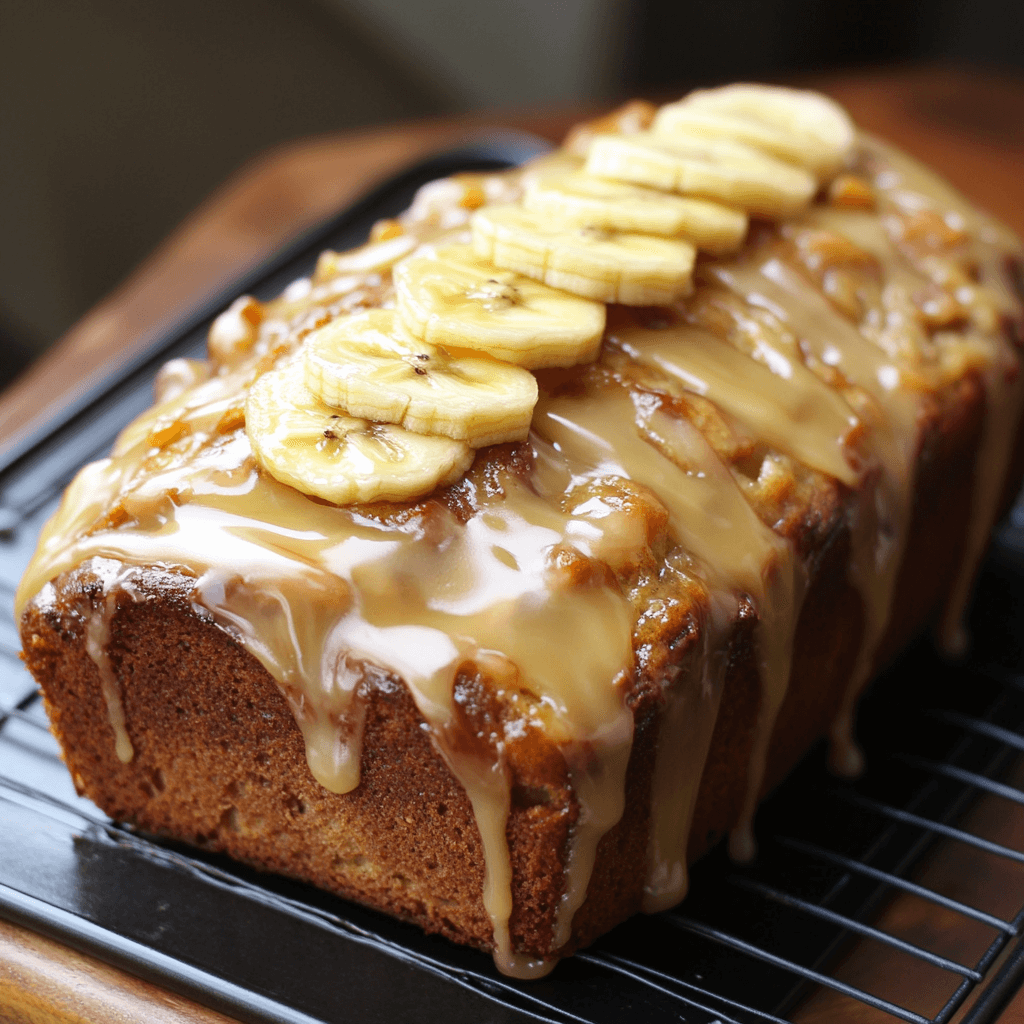
A well-crafted glaze not only adds depth to the loaf’s flavor but also provides a glossy, eye-catching finish. From simple sugar-based toppings to bold, zesty twists, glazes offer endless possibilities for customization. This recipe stands out for its balance of sweetness and tang, offering a delightful complement to the natural richness of banana. Whether you’re preparing it for a family gathering or enjoying it solo, this glaze recipe promises to make your banana loaf unforgettable.
Jump to:
Why a Glaze Makes All the Difference
Banana loaf glaze is more than just a finishing touch; it transforms your banana loaf into a truly memorable creation. By adding a layer of flavor and visual appeal, it enriches the experience of enjoying this classic dessert. Whether you prefer subtle sweetness or bold flavors, a glaze can perfectly complement your banana loaf.
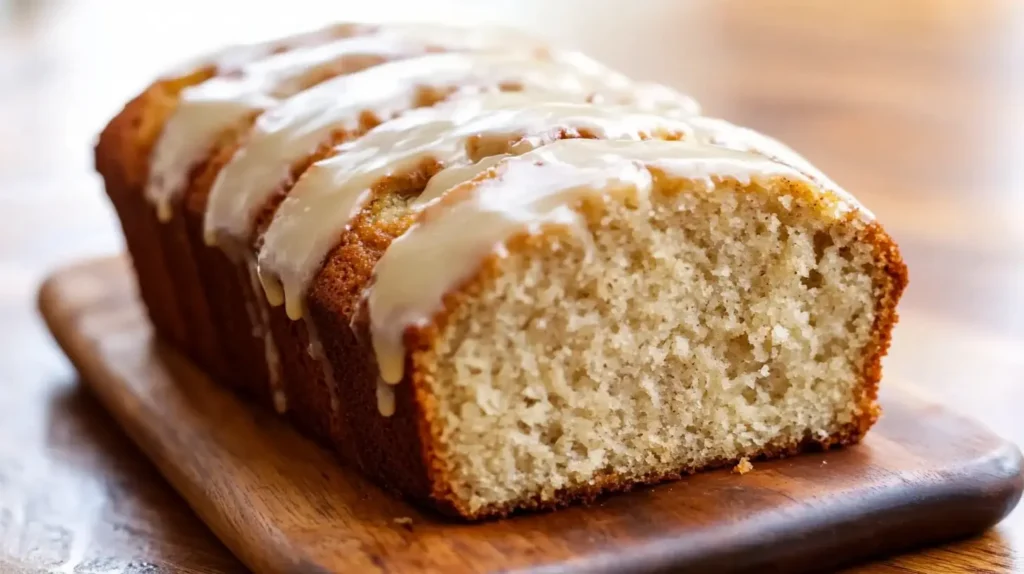
Adding Flavor with a Glaze
banana loaf glaze doesn’t just sit on top; it infuses every bite with additional layers of taste. For instance, a tangy lemon glaze can brighten the loaf’s natural sweetness, while a caramel glaze adds a rich, indulgent note. The beauty lies in its ability to deepen the flavor profile without overpowering the star ingredient—ripe bananas.
Aesthetic Appeal of a Shiny Glaze
The visual impact of a shiny glaze is undeniable. It gives your banana loaf a polished, bakery-style finish that makes it stand out on the table. A glossy topping also hints at the flavors waiting inside, enticing your guests even before the first bite. Whether drizzled or fully coated, a well-applied glaze adds elegance and charm.
Customizing Glaze to Suit Your Taste
One of the greatest advantages of a glaze is its versatility. You can tailor it to your preferences by experimenting with ingredients. For a tropical twist, try adding coconut milk; for a nutty undertone, mix in almond extract. The possibilities are endless, allowing you to create a signature glaze that matches your personal taste and the occasion.
Essential Ingredients for the Perfect banana loaf glaze
Crafting the ideal banana loaf glaze for your banana loaf begins with selecting the right ingredients. While classic recipes use pantry staples, experimenting with substitutions and variations can lead to exciting new flavors.
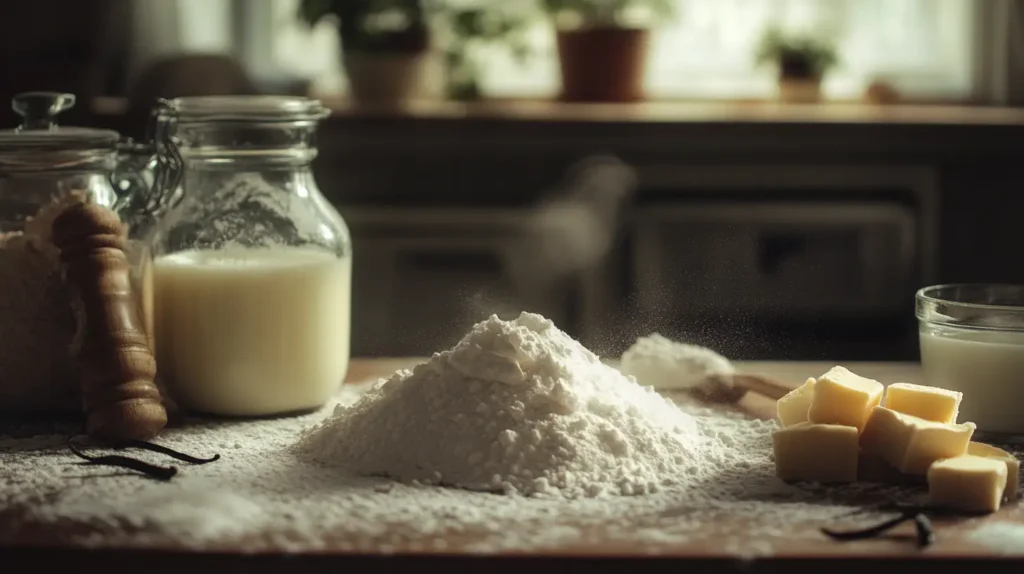
Common Ingredients for a Classic Glaze
The foundation of most glazes is simple yet effective. Here are the key components:
- Powdered Sugar – The primary ingredient for a smooth, sweet base. It dissolves easily, making it ideal for glazes.
- Liquid (Milk, Water, or Juice) – Adjusts the glaze’s consistency and adds subtle flavor. Citrus juice, for example, can brighten the overall taste.
- Flavoring Extracts – Vanilla extract is a go-to, but almond, lemon, or even maple extract can add distinct layers of taste.
These basic ingredients create a classic glaze that pairs wonderfully with the rich flavor of banana loaf.
Substitutions and Variations to Try
Customizing your glaze allows you to adapt it for different occasions or dietary needs. Consider these ideas:
- Dairy-Free Alternatives – Swap milk for almond milk, coconut milk, or oat milk to cater to dietary restrictions or preferences.
- Natural Sweeteners – Replace powdered sugar with honey or maple syrup for a more wholesome sweetness. Adjust quantities to maintain the right consistency.
- Bold Flavors – Experiment with add-ins like cocoa powder for a chocolate glaze or a pinch of cinnamon for a warm, spiced version.
These variations give you the flexibility to match the glaze to your preferences and create something truly special.
Tools You’ll Need for perfect banana loaf glaze
Creating the perfect banana loaf glaze requires just a few basic kitchen tools. With the right items on hand, you can mix and apply your glaze with ease, ensuring a smooth and professional finish.
Basic Kitchen Tools for Glazing
- Mixing Bowl: A medium-sized bowl is perfect for combining your glaze ingredients without making a mess.
- Whisk or Spoon: A small whisk helps achieve a lump-free glaze, but a sturdy spoon works well too.
- Measuring Cups and Spoons: Precise measurements are key to getting the right consistency for your glaze.
- Spatula or Knife: A small offset spatula or butter knife makes spreading the glaze evenly a breeze.
- Parchment Paper or Baking Mat: Placing your loaf on parchment makes cleanup quick and prevents sticking.
Tips for Easier Application
- Cool Completely: Ensure your banana loaf has cooled entirely before applying the glaze. This prevents it from melting and sliding off.
- Adjust Consistency: If the glaze feels too thick, add liquid in small increments. For a thicker glaze, incorporate more powdered sugar.
- Drizzle or Spread? For a polished look, use a spoon to drizzle the glaze in thin streams. For full coverage, spread evenly with a spatula.
- Work Quickly: Once mixed, the glaze can set fast. Apply it promptly for the best texture and shine.
With these tools and tips, banana loaf glaze becomes an effortless and enjoyable process, resulting in a treat that’s as beautiful as it is delicious.
Step-by-Step Guide to Making the Perfect Glaze
Crafting a flawless banana loaf glaze is simple when you follow a few straightforward steps. From preparation to achieving the ideal texture, this guide covers everything you need to know.
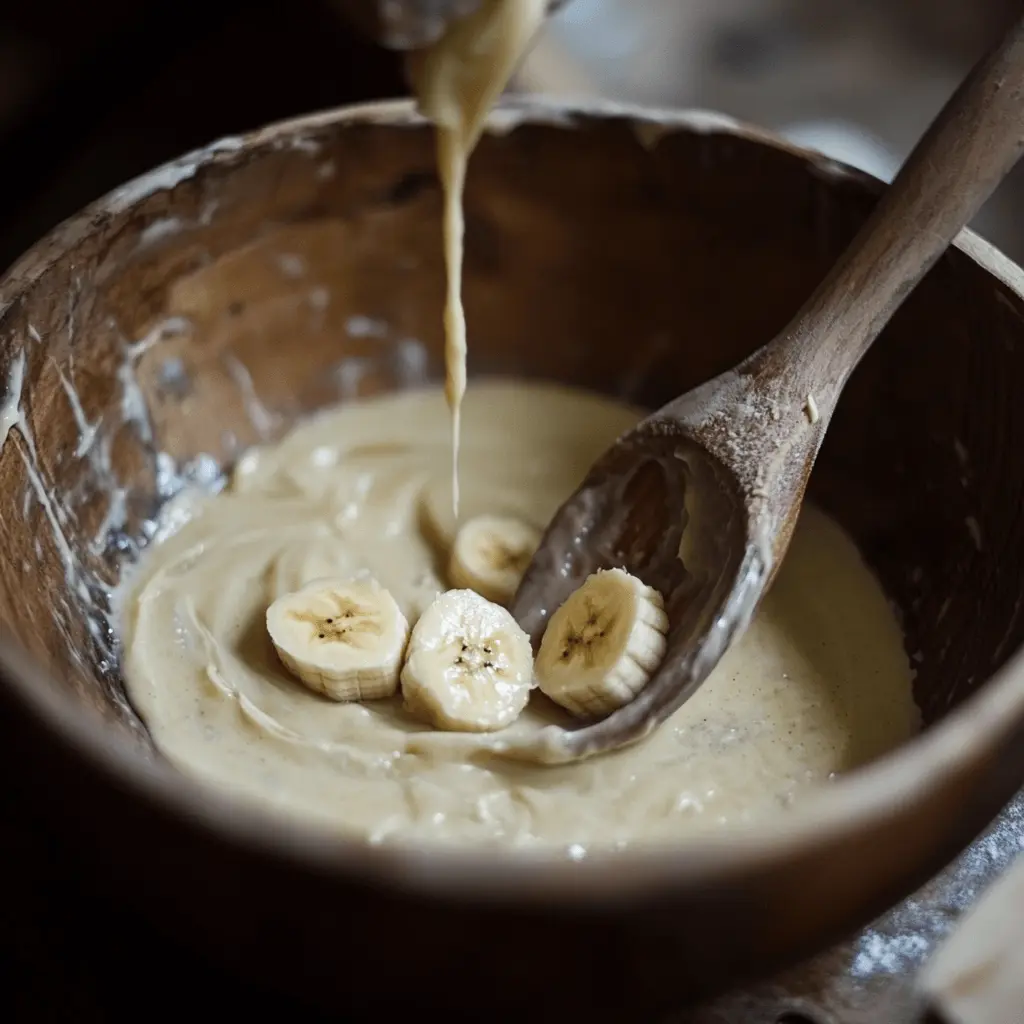
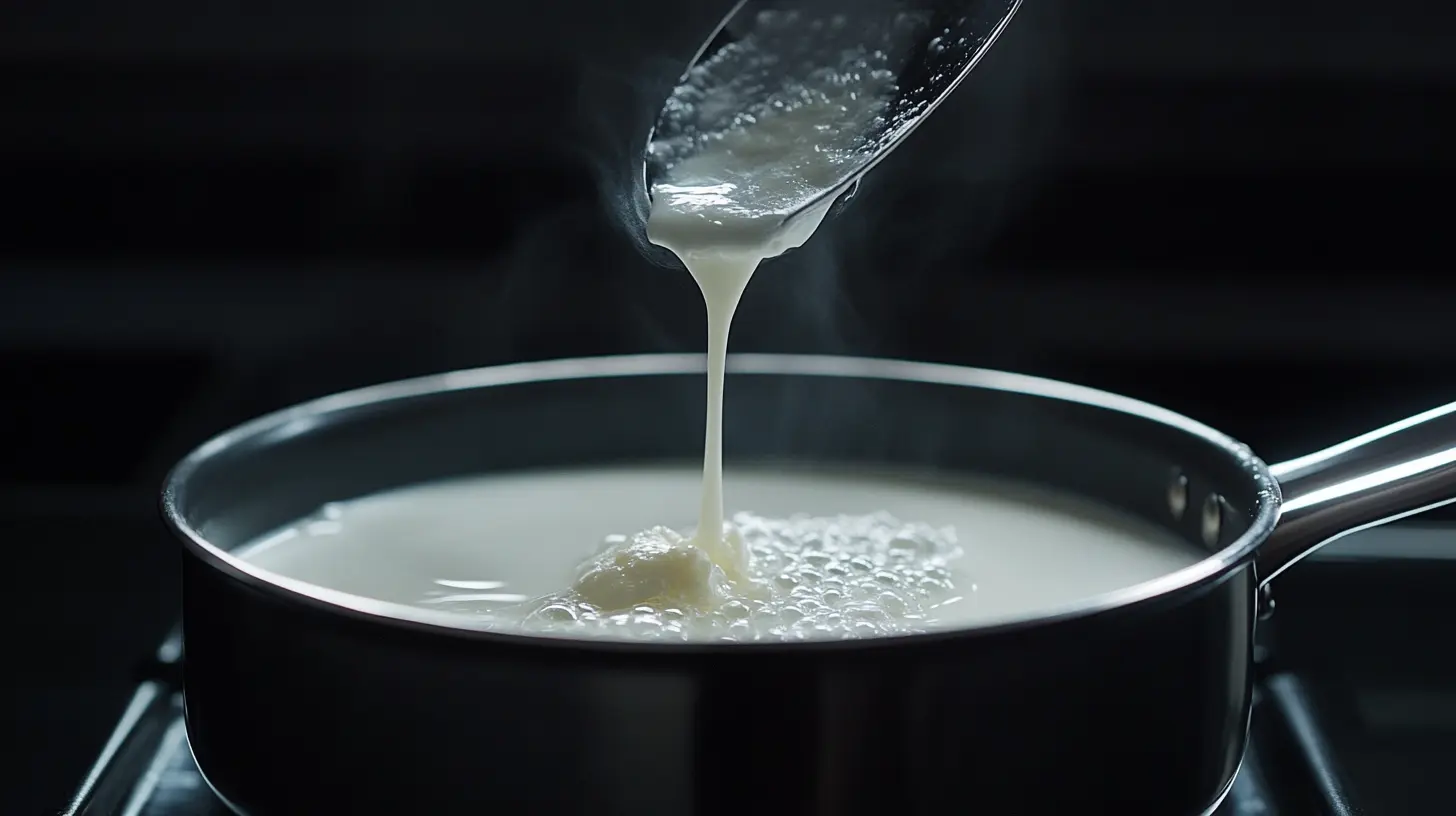
Preparing Your Ingredients
Start by gathering all your ingredients to streamline the process. Measure powdered sugar, your choice of liquid (milk, water, or juice), and any flavoring extracts. Having everything ready ensures you can mix the glaze quickly and efficiently.
- Sift powdered sugar to remove any lumps, creating a smoother base.
- If using juice or milk, choose fresh and high-quality options for a richer flavor.
Mixing Techniques for a Smooth Texture
Achieving a lump-free glaze is all about the mixing method:
- Begin by combining the powdered sugar with a small amount of liquid.
- Use a whisk or fork to stir gently until the mixture begins to blend.
- Gradually add more liquid, a teaspoon at a time, to control the thickness.
- Stir briskly until the glaze is smooth and glossy. Avoid overmixing, as it can introduce air bubbles.
Adjusting Consistency for Best Results
The ideal glaze consistency depends on how you plan to apply it:
- Drizzle Consistency: Aim for a thinner glaze that flows easily by adding a bit more liquid. Test by lifting the whisk to see if it streams smoothly.
- Spreadable Consistency: For a thicker glaze that stays in place, add powdered sugar to thicken. Check by running a spoon through the mixture; it should hold its shape briefly.
With these steps, you’ll create a glaze that not only tastes incredible but also adds the perfect finishing touch to your banana loaf.
How to Apply the Glaze on Your Banana Loaf
Applying the banana loaf glaze is the final step that brings your banana loaf to life. Getting the timing and technique just right creates a polished finish and adds extra flavor.
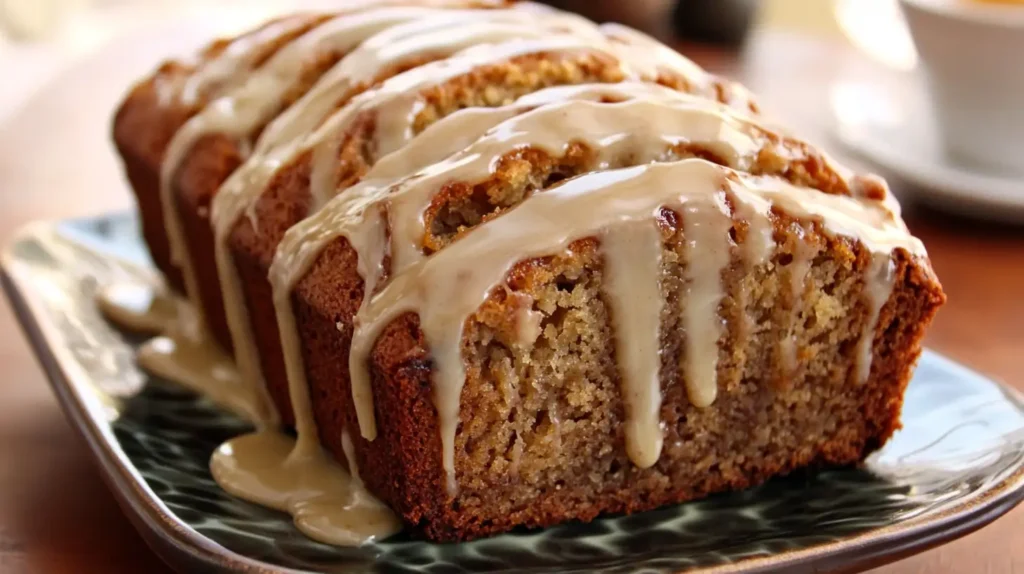
Timing the Application Perfectly
The right timing plays a key role in achieving a successful banana loaf glaze application:
- Cool Completely: Allow your banana loaf to cool fully before glazing. A warm loaf can cause the glaze to melt and lose its texture.
- Right Before Serving: For the freshest presentation, apply the glaze shortly before serving. This keeps it looking shiny and prevents it from soaking in too much.
Spreading or Pouring Techniques
The method you choose to apply the banana loaf glaze can change the look and feel of the finished loaf:
- Pouring Technique: For a drizzled look, use a spoon to pour the glaze in thin streams over the loaf. Move the spoon back and forth to create an even drizzle. This works best with a thinner glaze.
- Spreading Technique: For full coverage, use a small offset spatula or the back of a spoon to spread the glaze evenly over the top. This method works well with thicker glazes and creates a smooth, polished finish.
No matter the approach, these techniques help create a banana loaf that’s as appealing visually as it is delicious to eat.
Creative Glaze Variations to Try
Adding a unique banana loaf glaze can transform your banana loaf into a new and exciting treat. These creative variations allow you to experiment with bold flavors and textures, making each bake feel special.
Chocolate Glaze for a Rich Twist
For chocolate lovers, this glaze adds a decadent layer of richness to your banana loaf:
- Ingredients: Powdered sugar, cocoa powder, a splash of milk, and a touch of vanilla extract.
- Method: Mix powdered sugar and cocoa powder, then slowly incorporate milk until smooth. Stir in the vanilla for added depth.
- Perfect Pairing: The chocolate glaze complements the sweetness of bananas while adding a luxurious, velvety finish.
Citrus-Infused Glaze for a Zesty Flavor
Bring a bright and refreshing element to your loaf with a citrus-infused glaze:
- Ingredients: Powdered sugar, fresh lemon or orange juice, and a small amount of zest.
- Method: Combine the sugar and juice, adjusting the consistency as needed. Stir in zest for an extra burst of citrus flavor.
- Perfect Pairing: This glaze works beautifully with the natural sweetness of bananas, adding a tangy balance.
Nut-Based Glazes for Extra Crunch
For those who enjoy texture, a nut-based glaze adds a delightful crunch:
- Ingredients: Powdered sugar, almond or hazelnut extract, and finely chopped nuts (optional).
- Method: Mix the sugar with a few drops of your chosen nut extract and add water or milk to achieve the desired consistency. Stir in finely chopped nuts for texture.
- Perfect Pairing: This glaze creates a wonderful contrast of smooth sweetness and nutty flavor, making each bite more exciting.
These variations allow you to tailor your banana loaf to suit different occasions, moods, or tastes, ensuring it always feels fresh and unique.
Common Mistakes to Avoid When Making Glaze
Even with simple ingredients, a few common missteps can affect the final result of your banana loaf glaze. Here’s how to sidestep them and create a flawless topping every time.
Over-Thickening the Glaze
One frequent issue is making the glaze too thick, which can lead to uneven application:
- Problem: Adding too much powdered sugar or too little liquid results in a stiff glaze that’s hard to spread or drizzle.
- Solution: Add liquid gradually, a teaspoon at a time, and stir thoroughly after each addition. Aim for a smooth, flowing consistency that coats the loaf evenly.
Applying Glaze on a Hot Loaf
Glazing while the loaf is still warm can ruin the texture and appearance:
- Problem: Heat causes the glaze to melt, leading to a runny mess instead of a glossy finish.
- Solution: Always wait until the loaf is completely cooled to prevent melting and allow the glaze to adhere properly.
Skipping the Cooling Step
Neglecting to cool the glaze mixture itself can also cause problems:
- Problem: Warm glaze can spread too thin and fail to create a uniform layer.
- Solution: Let the glaze rest for a few minutes after mixing, especially if ingredients like melted butter or warm liquids are used.
By avoiding these mistakes, you’ll create a glaze that adds both flavor and a polished look to your banana loaf.
FAQ
Can I make the glaze ahead of time?
Yes, you can prepare the glaze in advance. Store it in an airtight container in the refrigerator for up to 2 days.
What’s the best way to fix a runny glaze?
If your banana loaf glaze is too runny, add more powdered sugar a little at a time until it thickens to your desired consistency.
Can I skip the glaze entirely?
You can make a lighter glaze by using natural sweeteners like honey or maple syrup instead of powdered sugar.
Why is my glaze not sticking to the loaf?
This often happens if the loaf isn’t completely cool. Always let it cool fully before applying the glaze, so it adheres properly without sliding off.
Conclusion
A perfectly banana loaf glaze is more than just a dessert—it’s an experience that combines flavor, texture, and visual appeal. Whether you opt for a classic glaze or experiment with creative variations, the right glaze can transform your banana loaf into a centerpiece for any occasion.
By understanding the essential tools, techniques, and common pitfalls, you’re well-equipped to craft a banana loaf glaze that complements your loaf beautifully. From rich chocolate to zesty citrus and nutty textures, there’s no shortage of ways to personalize your creation.
Finally if you love banana you also make a delicious Strawberry Banana Pudding, gather your ingredients, follow the steps, and enjoy the process of creating a banana loaf that’s as delicious to eat as it is satisfying to make. Happy baking!
